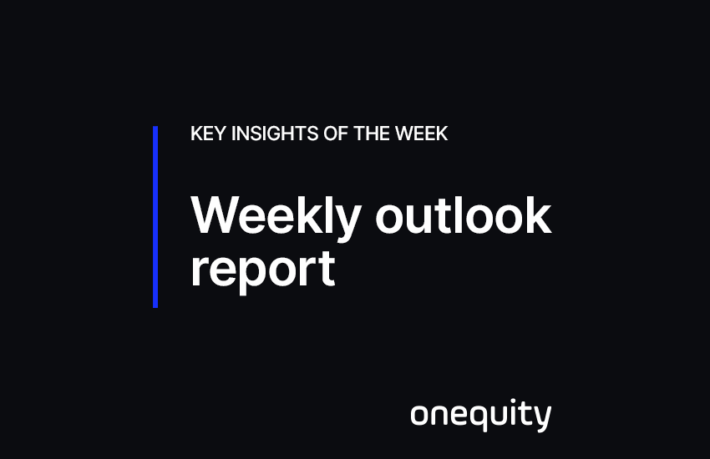Weekly Market Outlook | 18-22 Aug

The week of August 18 – 22 is set to be pivotal for global markets, with the release of the Federal Reserve’s July meeting minutes and Chair Jerome Powell’s remarks at the Jackson Hole symposium potentially paving the way for a September rate cut. In the United States, key data including housing starts, building permits, and preliminary PMIs will guide expectations, while Canada’s CPI, the UK’s inflation report, and eurozone PMIs will provide fresh clues on interest rate paths. In Asia-Pacific, Japan’s CPI and the Reserve Bank of New Zealand’s policy decision will be closely watched for signs of monetary shifts. With central bank signals and high-impact data ahead, markets could experience heightened volatility.
Key Points to Watch
- Fed Minutes and Powell’s Jackson Hole Remarks Could Pave the Way for Rate Cut
- Flash August PMIs and the Reserve Bank of New Zealand’s policy decision remain key focal points for investors.
- Consumer price data from Canada, Japan, and the United Kingdom will also be closely monitored for potential interest rate signals.
Further Resources
Visit the OnEquity Official Website for real-time market intelligence, daily technical insights, advanced trading infrastructure, and institutional-grade solutions tailored to support your strategic financial objectives.
Will the Fed Signal a Moderate Shift at Jackson Hole?
The Federal Reserve remains in focus following its July 30 monetary policy decision and President Trump’s continued criticism of Chairman Powell. This week, attention will turn to the release of the July meeting minutes on Wednesday, August 20, and the Jackson Hole Annual Economic Policy Symposium, scheduled for August 21–23.
This event, attended by senior officials from the ECB, Bank of Japan, Bank of England, and other central banks, has historically been used to outline policy shifts. Following softer employment data in July and a mixed CPI report, Powell could prepare markets for a September rate cut. Disagreements within the FOMC, combined with political pressure from the White House, reinforce expectations of a dovish tone, although inflation uncertainty driven by tariffs may temper guidance.
Headline CPI remained unchanged in July, but core CPI rose to 3.1%, with services inflation—unrelated to tariffs—remaining resilient. This persistence could prompt Powell to maintain a data-dependent stance, tying future policy moves to the balance between labor market weakness and inflationary pressures. Such caution could limit downside moves in the dollar and moderate equity market reactions.
Key U.S. data releases include July housing starts and building permits (Tuesday, August 19), the 20-year Treasury bond auction (Wednesday, August 20), the Philadelphia Fed index, preliminary PMIs, and existing home sales (Thursday, August 21). Weak readings could add pressure on the Fed ahead of Powell’s address on Friday, August 22.
Inflation Outlook for the UK and Pound Sterling
The Bank of England recently cut rates by 25 basis points and expects inflation to peak at 4.0% in September before moderating toward target in mid-2027. July’s CPI report could point to a higher peak, with headline inflation slightly below 4.0% but core CPI still elevated. A modest rise in core inflation may provide policymakers with some confidence but could limit sterling’s rally, particularly if the Fed signals a dovish shift.
With GBP/USD approaching 1.36, preliminary August PMIs (Thursday, August 21) and July retail sales (Friday, August 22) could add volatility. Recent resilience in retail sales, stronger GDP growth, and an improved trade agreement with the United States have supported confidence in the UK economy.
Eurozone Awaits PMI Confirmation Amid Tariff Concerns
The EU’s acceptance of U.S. tariffs of 15% on automobiles, reduced from the previously threatened 25%, has eased some pressure on the auto sector. However, steel exports remain subject to a 50% levy. Increased defense and infrastructure spending may cushion some of the external drag, but the euro’s appreciation has stalled since early July.
Preliminary PMIs for August, scheduled for Thursday, August 21, will be closely monitored for signs of growth momentum. The final CPI for July, due Wednesday, August 20, is expected to confirm the headline rate of 2.0%.
Canada: CPI in Focus Amid Slowing Growth
Although most Canadian exports are protected under the USMCA, certain products face U.S. tariffs of 35%, straining trade relations. Canada’s GDP has contracted for two consecutive months, while employment declined sharply in July. Despite this slowdown, elevated inflation suggests the Bank of Canada will likely delay further rate cuts until December, barring a significant shift in upcoming data.
Key indicators include July CPI (Tuesday, August 19), PPI (Thursday, August 21), and June retail sales (Friday, August 22), which will be critical in shaping expectations for the Canadian dollar.
Further Easing Likely from the RBNZ
The Reserve Bank of New Zealand, facing weaker trade conditions than Australia and persistent domestic economic challenges, is expected to cut rates by 25 basis points on Wednesday, August 20. The market’s reaction will depend heavily on the tone of the policy statement. Explicit signals of further easing could weigh more heavily on the New Zealand dollar, while a balanced stance could limit losses.
Conclusion
The Japanese yen has rebounded strongly from early August lows on renewed speculation about a potential rate hike. July CPI data, due Friday, will be pivotal, as core inflation remains above 3.0%, though the Bank of Japan maintains its 2% target has yet to be achieved sustainably. A stronger CPI reading could reinforce expectations for policy tightening before year-end.
Other key Japanese releases this week include machinery orders and trade data on Wednesday, August 20, along with preliminary PMIs on Thursday, August 21.

